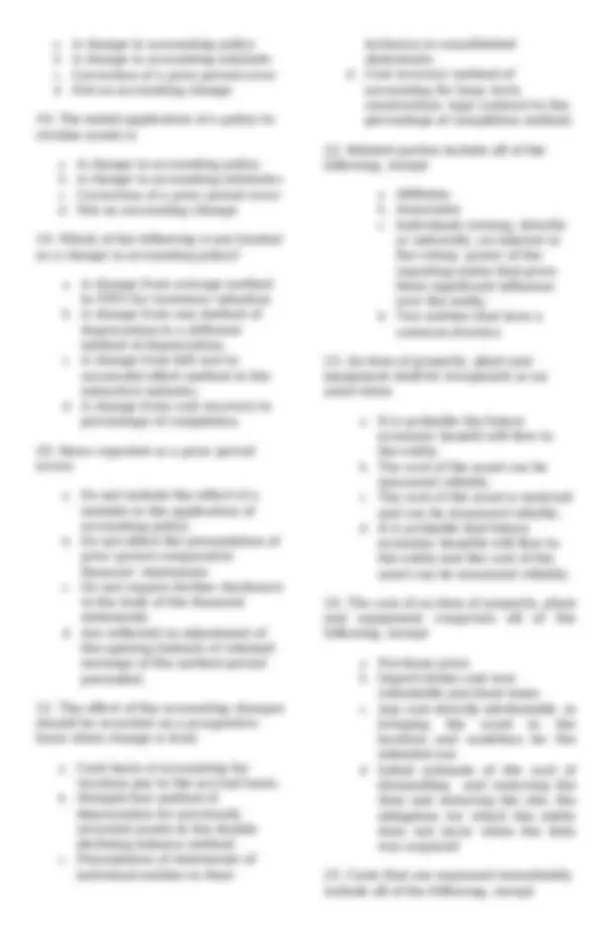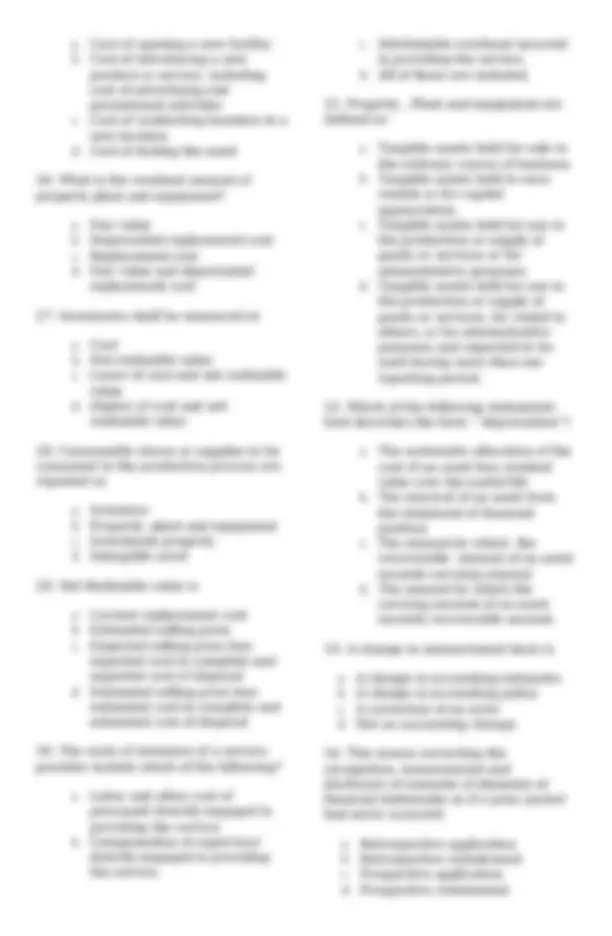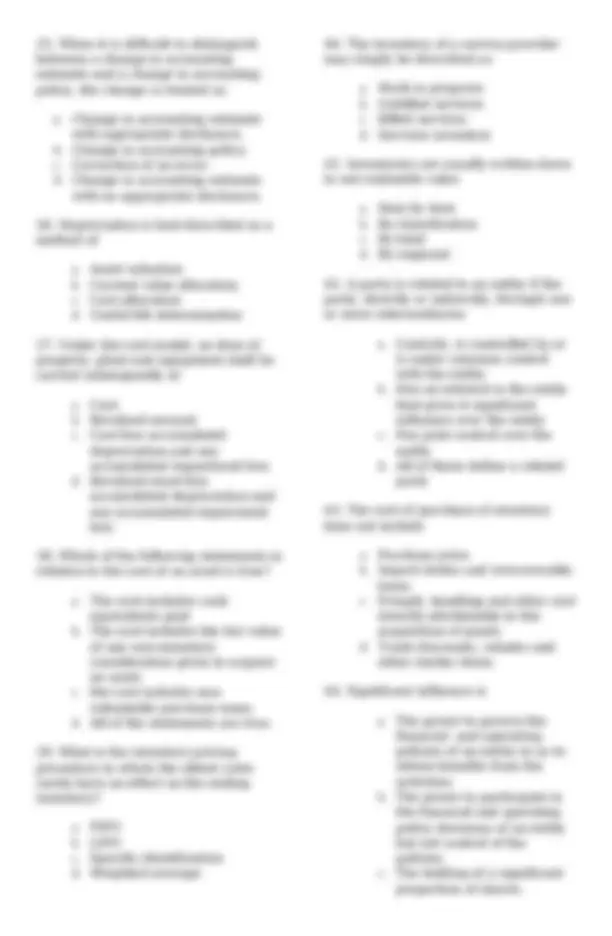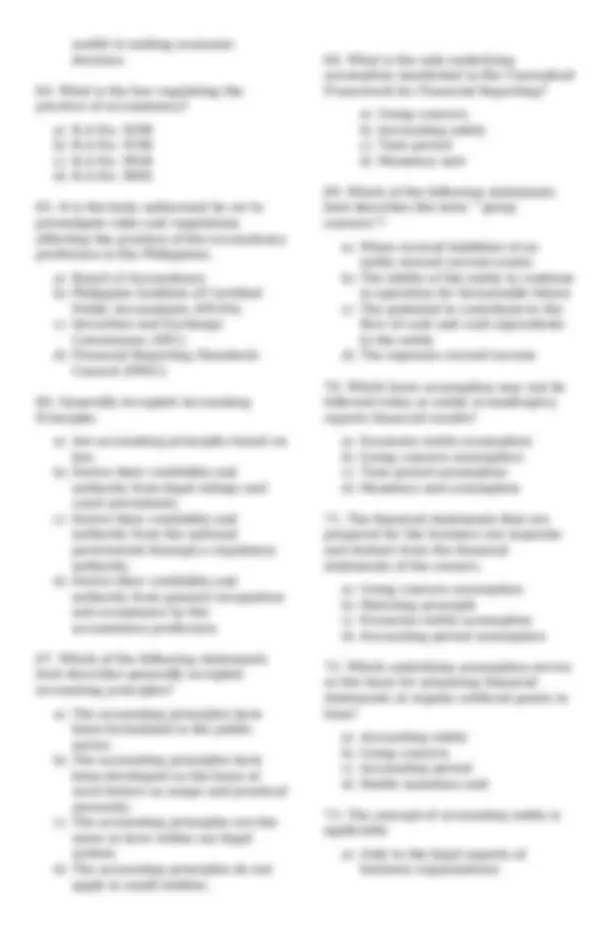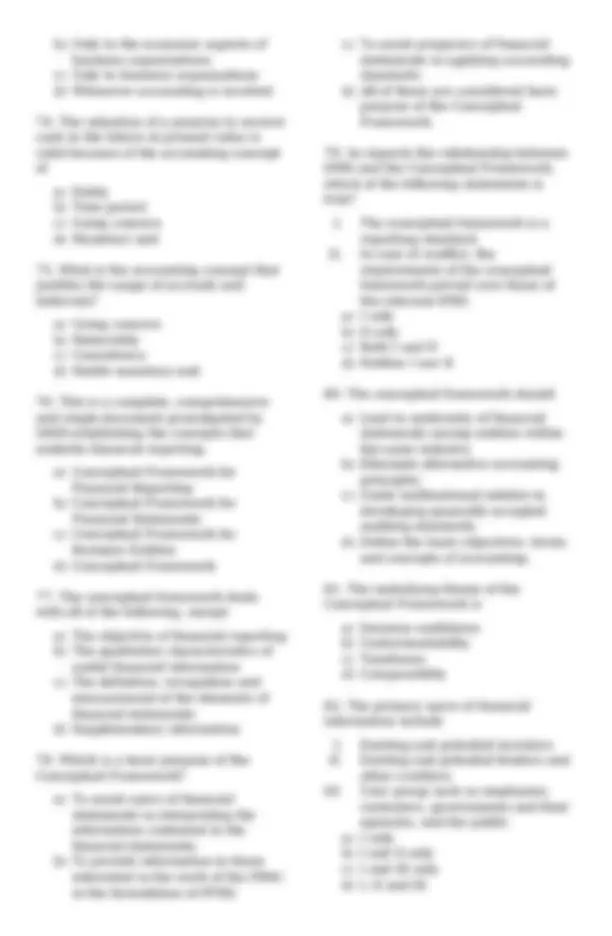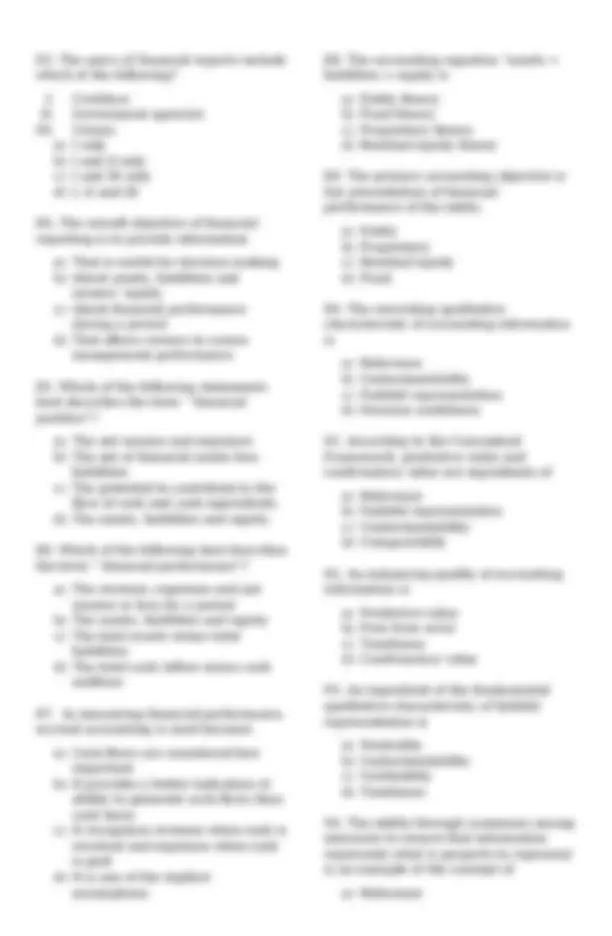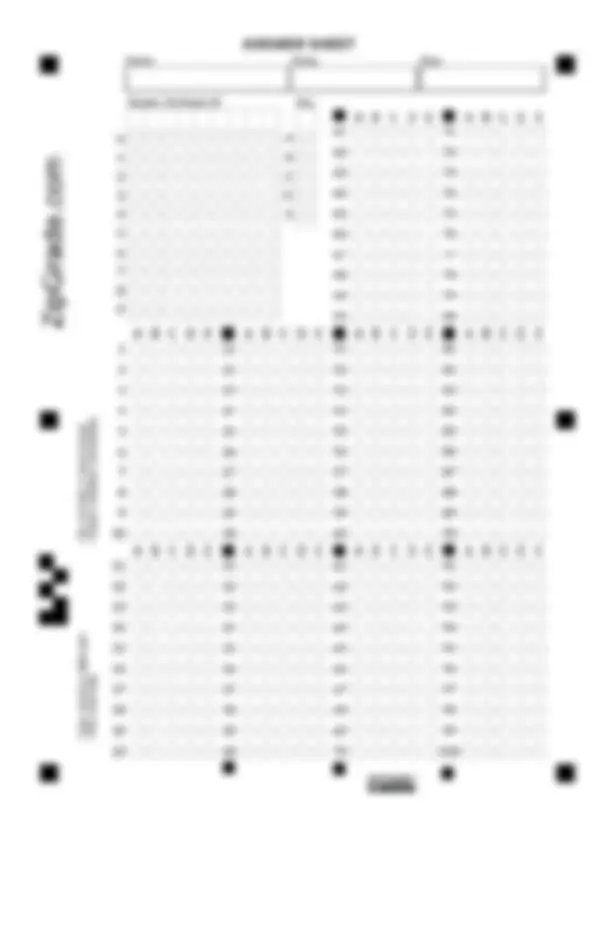Conceptual Framework and
Accounting Standards
FINAL COMPREHENSIVE
EXAM
1. Inventories include all of the
following assets, except
a. Held for sale in the ordinary
course of business.
b. In the process of production for
sale.
c. In the form of materials or
supplies to be consumed in the
production process or in the
rendering of services.
d. Held for use in the production
or supply of goods or services.
2. The cost of inventory is the sum of
a. Cost of purchase and cost of
conversion
b. Direct cost, indirect cost and
other cost
c. Cost of purchase, cost of
conversion and other cost
incurred in bringing the
inventory to the present
location and condition.
d. Cost of conversion and other
cost incurred in bringing the
inventory to the present
location and condition.
3. Non- adjusting events after reporting
period that requires disclosures include
all of the following, except
a. A major business combination
after reporting period.
b. Announcing a plan to discontinue
an operation.
c. Expropriation of major asset after
reporting period.
d. Destruction of a major production
plant by a fire before the end of
thr reporting period.
4. Which of the following events after
the reporting period would require
disclosure in the financial statements?
a. Retirement of the president
b. Settlement of litigation when the
event that gave rise to the
litigation occurred prior to the
end of reporting period.
c. Strike of employees
d. Issue of a large amount of
ordinary shares.
5. Theoretically, cash discounts
permitted on purchased raw materials
should be
a. Added to other income, whether
taken or not
b. Added to other income, only if
taken
c. Deducted from inventory,
whether taken or not
d. Deducted from inventory, only if
taken
6. The use of purchase discount account
implies that the recorded cost of a
purchased inventory is
a. Invoice price
b. Invoice price plus any purchase
discount lost
c. Invoice price less the purchase
discount taken
d. Invoice price less the purchase
discount allowable whether
taken or not.
7. The amount of any writedown of
inventory to net realizable value and all
losses of inventory shall be
a. Recognized as operating
expense in the period the
writedown or loss occurs.
b. Recognized as other expense in
the period the writedown or
loss occurs.
c. Recognized as component of
cost of goods sold in the period
the writedown or loss occurs.
d. Deferred until the related
inventory is sold.
8. Lower of Cost and Net Realizable
Value of Inventory
a. Is always either the net
realizable value or cost.
b. Must be equal to net realizable
value
c. May sometimes be less than net
realizable value.

